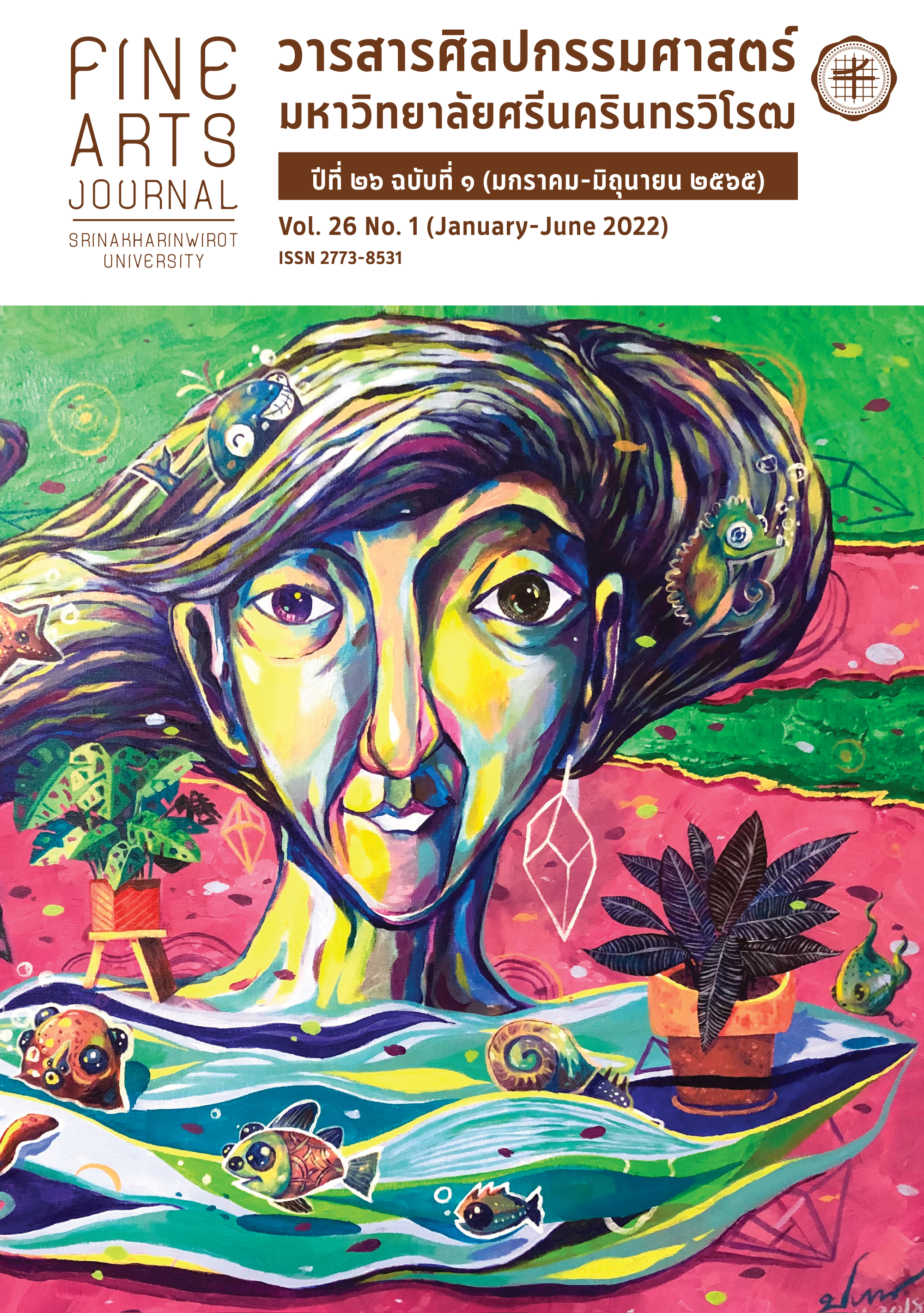A DESIGNING OF BONE CHINA CERAMIC JEWELRY
Keywords:
Commercial design, jewelry, Bone China ceramic, Design Guidelines, Alternative materialAbstract
The objectives of this research are 1) to study the physical and chemical properties of both authentic and artificial Bone China Ceramic material and analyze a guideline on how to design Bone China Ceramic jewelry for commercial purpose and 2) to design and to select a prototype of Bone China Ceramic jewelry. The semi-structured questionnaire was administered with two separate groups of respondents which were: a group of 2 experts in Ceramic production and a group of 3 experts in jewelry design. After that, the prototype was selected through the use of the assessment form rated by 5 specialists in gem and jewelry business.
The results obtained from the research showed that authentic bone China and artificial bone China shared some similar chemical properties including Protactinium Penta Oxide (Pa2O5) and Calcium Oxide (CaO). As for physical property, a few differences were observed. In terms of the commercial design approach, it was possible to use Bone China ceramics as a material for making jewelry. When using Bone China Ceramic for making jewelry, it was important to consider material properties, dimensions and weight. Also, casting and pressing were considered suitable processes for the jewelry production. In the design of jewelry, the Design Criteria principle along with the Sacict Craft Trend (2020) should be applied. The appropriate concept was design concept for Serenergy group under the concept of the appreciation of the true value. Based on this concept, the researcher proposed the use of generic materials, not equivalent to gemstones, as a main part of the jewelry design in order to reflect the true beauty and value of materials, simple design and the value of acknowledging the fact that jewelry was just a decorative object to wear and everything was from nature. The design was for the female jewelry consumers aging between 36-50 years old and it was designed in a form of contemporary jewelry under the category of fashion jewelry. The research implication was a guideline for developing creative jewelry design under the concept of using replacement materials or alternative materials apart from the basic materials for making jewelry and commercially added value products.
Downloads
References
ทวีศักดิ์ มูลสวัสดิ์. (2562). การศึกษาผลงานนักออกแบบเครื่องประดับร่วมสมัยของไทยจาก พ.ศ. 2545 ถึง
ปัจจุบัน. กรุงเทพมหานคร: สำนักงานศิลปวัฒนธรรมร่วมสมัย กระทรวงวัฒนธรรม.
ธนกฤต ใจสุดา. (2563). เครื่องประดับเซรามิก: เอกลักษณ์ภูมิปัญญาสู่การพัฒนาผลิตภัณฑ์เชิงพาณิชย์.
วารสารศิลปกรรมศาสตร์ มหาวิทยาลัยศรีนครินทรวิโรฒ, 23(1), 73-84.
ธานินทร์ ศิลป์จารุ. (2550). การวิจัยและวิเคราะห์ข้อมูลทางสถิติด้วย SPSS ครอบคลุมทุกเวอร์ชั่น.
กรุงเทพมหานคร: บิสซิเนสอาร์แอนด์ดี.
พรพิมล พจนาพิมล. (2563). การศึกษาแนวโน้มการออกแบบเครื่องประดับในศตวรรษ 21 เพื่อสร้างมูลค่าเพิ่ม
ให้กับหินดิบด้วยกระบวนการออกแบบ. วารสารวิชาการนวัตกรรมสื่อสารสังคม, 7(2), 180-193.
ภาณุพงศ์ จงชานสิทโธ. (2562). เครื่องประดับเชิงสร้างสรรค์: รูปแบบ ความสวยงาม ในยุคเศรษฐกิจ
สร้างสรรค์. วารสารวิจัยการออกแบบแห่งเอเชีย, 2(1), 38-53.
รสชง ศรีลิโก. (2552). เครื่องประดับ: สาราณุกรมไทยสำหรับเยาวชน เล่มที่ 37. สืบค้นเมื่อ 18 ธันวาคม
จาก http://kanchanapisek.or.th/kp6 .
ศูนย์ส่งเสริมศิลปาชีพระหว่างประเทศ. (2563). “From Root to Rute”, Sacict Craft Trends 2020.
สืบค้นเมื่อ 17 ธันวาคม 2563 จาก https://www.sacict.or.th/th/detail/2019-07-11-16-38-23.
อังกาบ บุญสูง. (2559). การออกแบบและพัฒนาชุดเครื่องประดับสตรี จากแร่เหล็กน้ำพี้ จังหวัดอุตรดิตถ์.
วารสารวิชาการ คณะเทคโนโลยีอุตสาหกรรม มหาวิทยาลัยราชภัฏลำปาง, 9(2), 173-184.
อภิรดี วงศ์กิจรุ่งเรือง, และณัฐพล อัสสะรัตน์. (2560). วิจิตรศิลป์: กลยุทธ์ทางการตลาดใหม่ของร้านค้าปลีก.
จุฬาลงกรณ์ธุรกิจปริทัศน์, 39(1), 94-118.
Bragança, S., and Bergmann, C. (2017). A comparative study between bone china and hard
porcelain. Industrial Ceramics, 28(3), 2-6.
Hernández, A. (2017). Bamboo as alternative material in ecological jewelry. International
Journal of Development Research, 7(3), 12085-12089.
Mahyeddin, M. (2017). The use of ceramic product derived from Non-Halan animal bone: Is
it permissible from the perspective of Isalamic law?. International Journal of Asian
Social Science, 7(3), 192-198.
Skjulstad, S. (2019). Taking care of plastic: Discursive jewellery and anthropogenic debris.
Nordic Design Research (Nordes 2019: Who Cares?), 8(2019). 1-12.
Downloads
Published
How to Cite
Issue
Section
License

This work is licensed under a Creative Commons Attribution-NonCommercial-NoDerivatives 4.0 International License.






